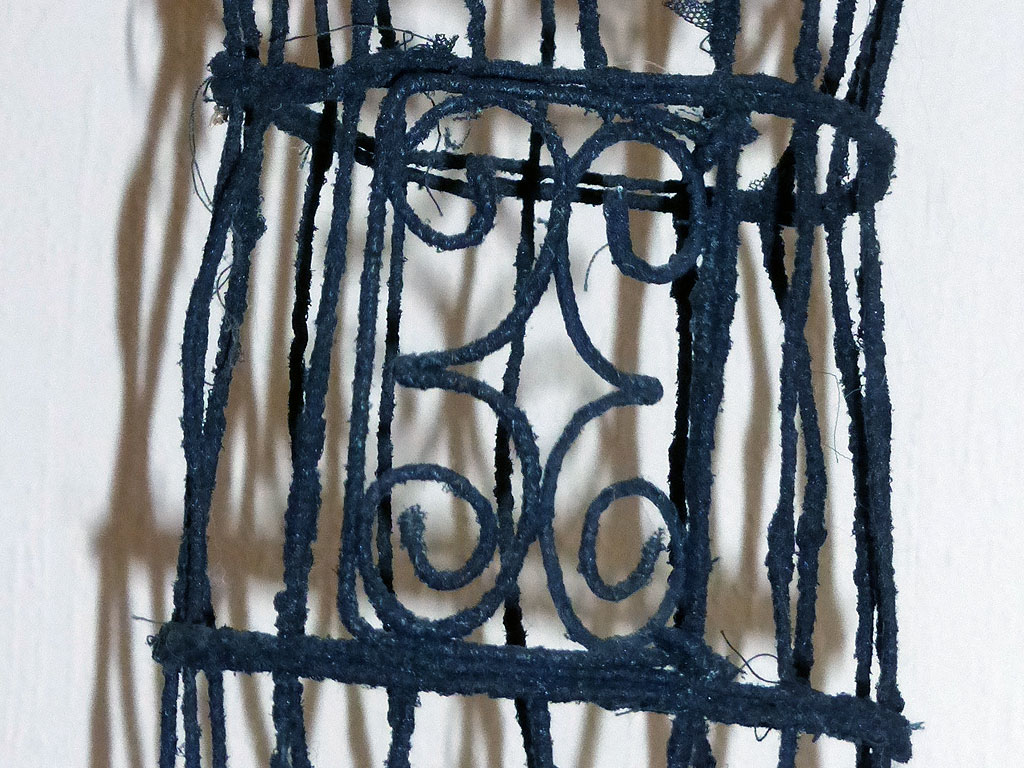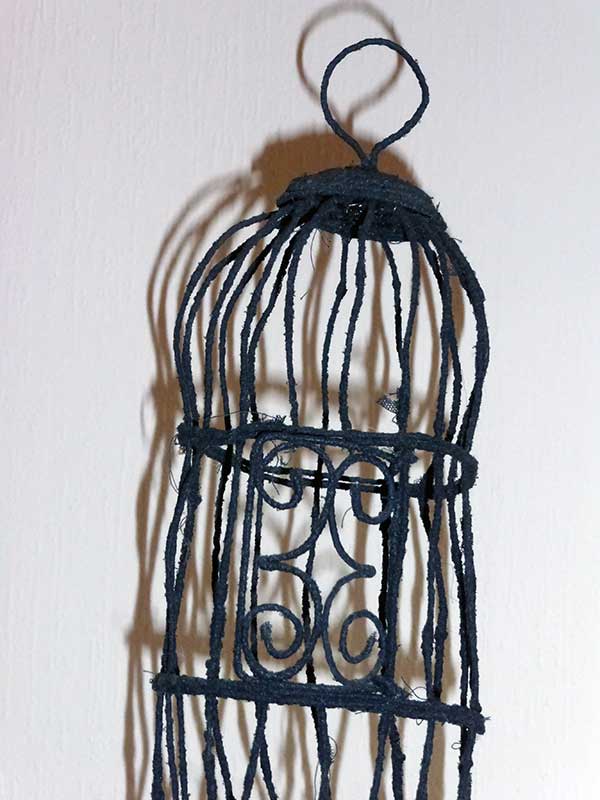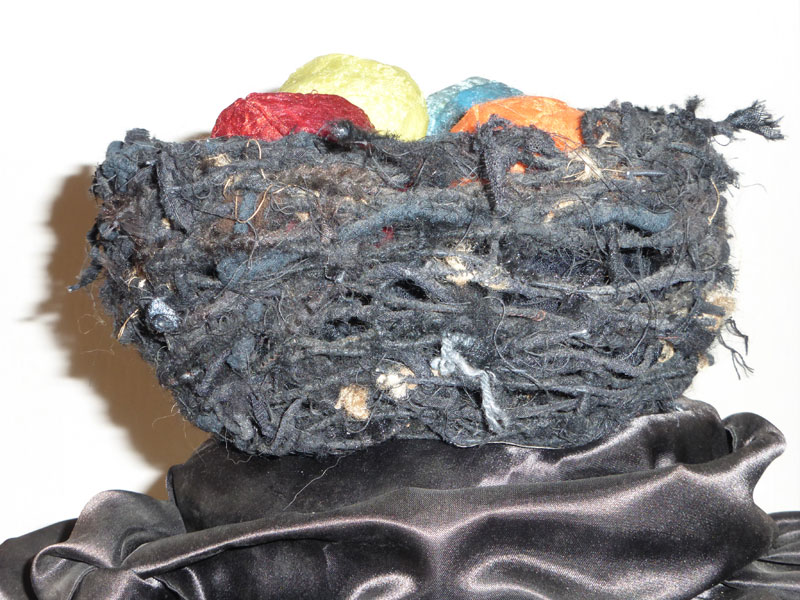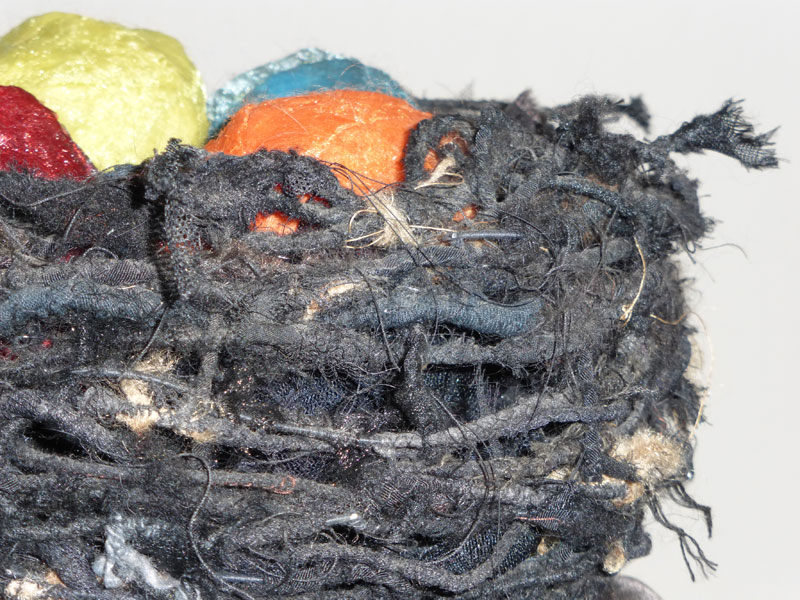Murderous Millinery
Millinery wire, fabric
The macabre Victorian craze for trimming ladies’ hats and bonnets with whole stuffed birds, wings and other body parts resulted in vast numbers of hummingbirds and other exotic species valued for their richly coloured plumage being imported into Europe to supply the demands of ‘murderous millinery’. At the height of this fashion frenzy, it is estimated that some 20 to 30 million birds were being imported annually into Britain alone. Horrified by the barbarity of this trade (birds were often skinned while alive so that their plumage retained its gloss), in 1889 a group of ladies in Manchester set up the Fur, Fin and Feather Group which later became the Royal Society for the Protection of Birds. This was a bold step as most Victorians believed in a hierarchy of life in which it was only proper for them to exercise their God-given dominion over the ‘lower animals’.
In ‘Murderous Millinery’, homage is paid to these beautiful birds who suffered so cruelly to satisfy a fashion whim. The two mourning hats displayed are adorned not with the typical black ostrich features of the period but with more surreal embellishments fashioned out of millinery wire. This has been wrapped with net, silk, satin and other fabrics commonly used in mourning dress, reflecting that other Victorian obsession with death. Here all is artifice, mimicking that of the Victorian milliners themselves who would construct fantastical composite birds from bits of different birds, wiring them to make them look more realistic and even dying and over-painting them to enhance the natural brilliance of their plumage. In this topsy-turvy world, reminiscent of Alice’s Wonderland, the birds’ eggs emerge iridescent, ready to fulfil their appointed purpose as fashion adornments.
The Great Exhibition / Frayed Edges,
Patriothall Gallery @ WASPS, Edinburgh (2008)
News
Read my latest news on my blog
Get in touch or
sign up for my newsletter



